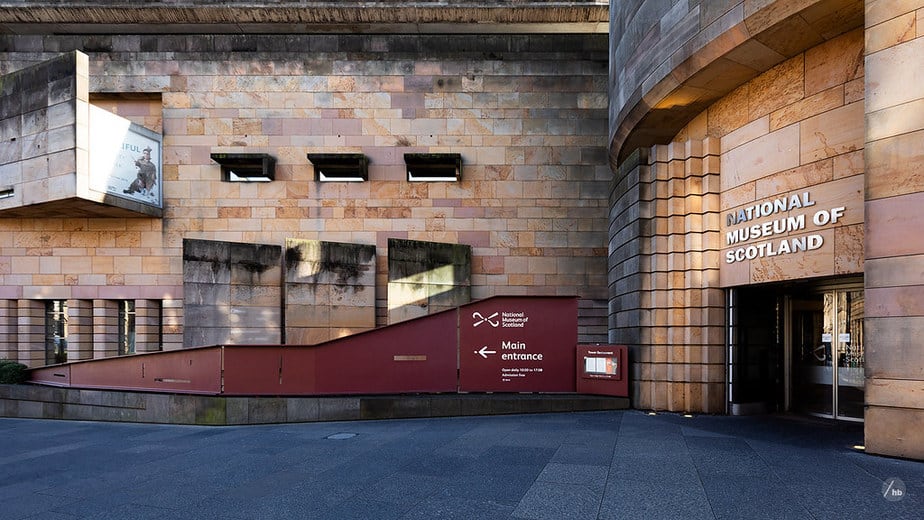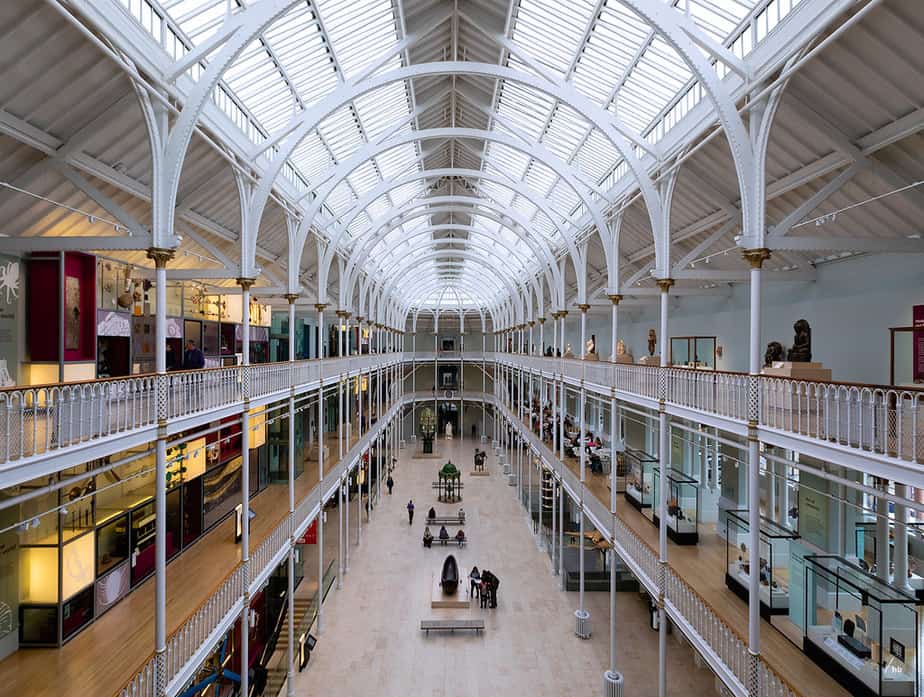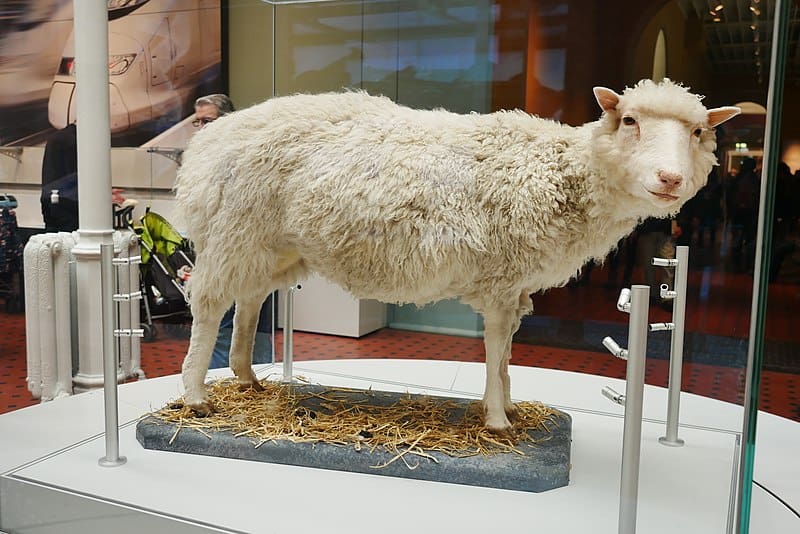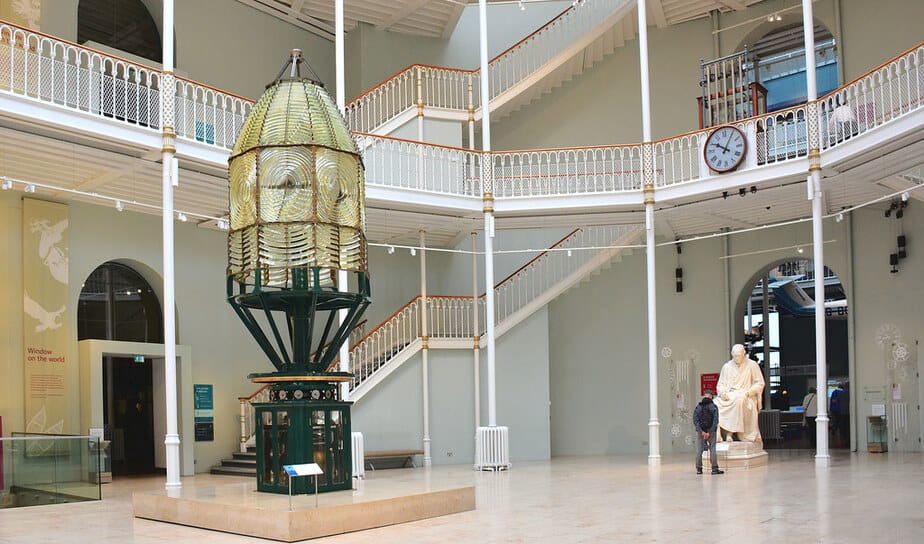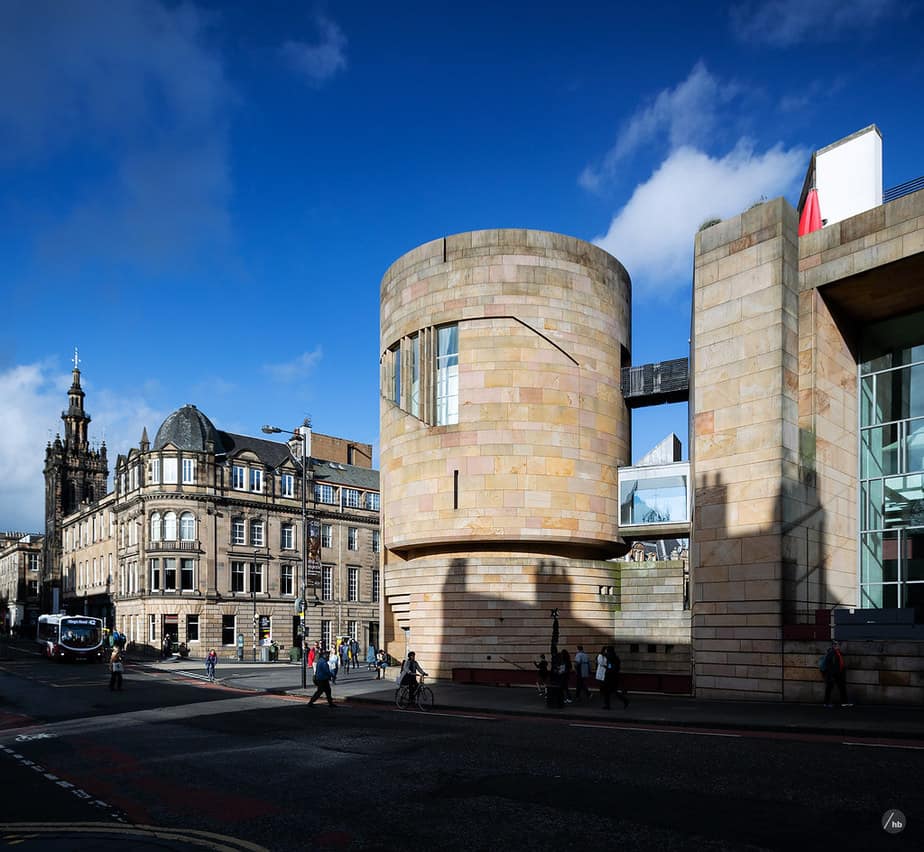10 Best Facts about the National Museum of Scotland
The National Museum of Scotland was founded in 2006 through the merger of two existing museums – the new Museum of Scotland and the Royal Scottish Museum. The National Museum of Scotland is located in Scotland’s capital city, Edinburg.
Housed in a modern building built in 1998, the Museum of Scotland had collections largely relating to Scottish antiquities, culture, and history.
While the former Royal Scottish Museum is located in an original Victorian building complete with a Venetian Renaissance facade. It focuses more on science and technology, natural history, and world cultures, and was first opened in 1866.
The museum is one of Scotland’s popular visitor attractions, and below are the 10 best facts about the National Museum of Scotland;
1. Tracing the museum’s roots to 1780s
The history of the museum can be traced back to 1780 with the foundation of the Society of Antiquaries of Scotland, which still continues, but whose collection of archaeological and other finds was transferred to the government in 1858.
In 1861 construction of the Industrial Museum of Scotland began, with Prince Albert laying the foundation stone. Later in 1866, renamed the Edinburgh Museum of Science and Art, the eastern end and the Grand Gallery were opened by Prince Alfred. In 1888 the building was finished and in 1904 the institution was renamed the Royal Scottish Museum.
2. What’s in a name?
The museum has gone through a number of names through the years. It began as The Industrial Museum Of Scotland. In 1864, it was renamed to The Museum Of Science and Art, only to be renamed as the Royal Scottish Museum in 1904. Then in 985 the museum was renamed the Royal Museum of Scotland.
In 1858 the Society of Antiquaries of Scotland transferred to the government its collection of archaeological and other finds as the National Museum of Antiquities of Scotland.
As the two museums had been merged and were located close to each other the different names caused confusion to visitors, and in 2006 permission was granted to remove “Royal” to achieve a unified brand.
3. The merging of two distinct museums
The organizational merger of the National Museum of Antiquities of Scotland and the Royal Scottish Museum took place in 1985, but the two collections retained separate buildings until 1995 when the Queen Street building closed, to reopen later as the Scottish National Portrait Gallery.
In 1998 the new Museum of Scotland building opened, adjacent to the Royal Museum, and connected to it. The masterplan to redevelop the Victorian building and further integrate the architecture and collections was launched in 2004, and in 2006 the two museums were formally merged as the National Museum of Scotland.
4. Home to a diverse collection of artefacts
The National Museum of Scotland has a diverse collection of artefacts relating to both the history and culture of Scotland as well as artefacts from around the world, encompassing geology, archaeology, natural history, science, technology, art, and world cultures.
Collections relating to Scottish antiquities, culture and history are located in the Museum of Scotland, while the Royal Scottish Museum displays international collections covering science and technology, natural history, and world cultures.
The connected buildings stand beside each other on Chambers Street, by the intersection with the George IV Bridge, in central Edinburgh.
5. An exhibition on a scientific achievement
One of the more notable exhibits is the stuffed body of Dolly the sheep, the first successful cloning of a mammal from an adult cell. The female sheep was named after Dolly Parton, World renowned country musician.
Dolly’s body was preserved via taxidermy and donated by the Roslin Institute in Scotland to the National Museum of Scotland, and has regularly exhibited since 2003.
Her cloning proved that a cloned organism could be produced from a mature cell from a specific body part. It led to widespread advancements within stem cell research, including the discovery of induced pluripotent stem cells.
6. The museum is a Class A listed building
A listed building is one that has been placed on one of the four statutory lists maintained by Historic England in England, Historic Environment Scotland in Scotland, Cadw in Wales, and the Northern Ireland Environment Agency in Northern Ireland.
Category A is in reference to buildings of special architectural or historic interest which are outstanding examples of a particular period, style or building type.
A listed building may not be demolished, extended, or altered without special permission from the local planning authority. Despite the museum being a Class A listed building, it was possible to add lifts and escalators.
7. Inspiration for the building design
The architect of the National Museum of Scotland was civil engineer Captain Francis Fowke of the Royal Engineers. Construction of the museum started in 1861 and proceeded in phases, with the full extent of the original design being completed in 1888.
He took his inspiration from the design of Crystal Palace in London, The Crystal Palace was a cast iron and plate glass structure, originally built in Hyde Park, London, to house the Great Exhibition of 1851.
From the outside, the building has a stone-clad facade typical of Edinburgh architecture. While its inside reflects Victorian Pride with its tall, slim cast iron columns and a glass roof.
Crystal Palace burned to the ground in 1936.
8. The museum is easily accessible
The National Museum of Scotland is located in the centre of Edinburgh, and is well-linked to a number of public transport options.
Edinburgh Waverley train station is a 10-minute walk away, while the nearest tram stop is on Princes Street, a 10-minute walk up The Mound. A number of bus services also stop on Bristo Street, a 2-minute walk away.
There is level access to the museum via the main doors to the Entrance Hall on Chambers Street and the Tower entrance at the corner of Chambers Street and George IV Bridge.
Wheelchairs are available for loan at no charge whilst visiting the museum.
9. April fool’s Day prank
The Royal Scottish Museum displayed prank exhibits on April Fool’s Day in 1975. The prank involved a fictitious bird called the Bare-fronted Hoodwink (known for its innate ability to fly away from observers before they could accurately identify it) was put on display.
Bare-fronted Hoodwink was composed of wax, and the exhibition included photos of blurry birds flying away.
To make the exhibit more convincing, a mount of the bird was sewn together by a taxidermist from various scraps of real birds, including the head of a carrion crow, the body of a plover, and the feet of an unknown waterfowl.
10. Admission to the museum is free
In line with the updated Scottish Government guidelines, you no longer need to pre-book a ticket to visit. Entry to the museum is free. However, donations are recommended but are not mandatory.
The National Museum of Scotland is open daily between 10.00 – 17.00.
Planning a trip to Paris ? Get ready !
These are Amazon’s best-selling travel products that you may need for coming to Paris.
Bookstore
- The best travel book : Rick Steves – Paris 2023 – Learn more here
- Fodor’s Paris 2024 – Learn more here
Travel Gear
- Venture Pal Lightweight Backpack – Learn more here
- Samsonite Winfield 2 28″ Luggage – Learn more here
- Swig Savvy’s Stainless Steel Insulated Water Bottle – Learn more here
Check Amazon’s best-seller list for the most popular travel accessories. We sometimes read this list just to find out what new travel products people are buying.






